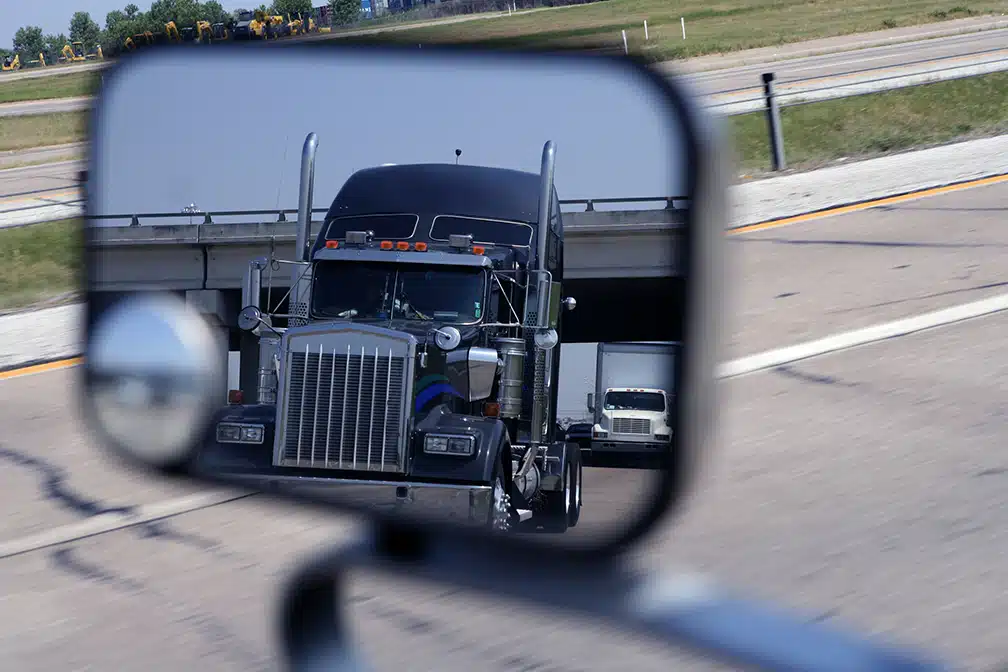Connectivity and telematics are becoming increasingly important in the trucking industry as fleet operators seek to improve efficiency, reduce costs, and enhance safety. Connectivity refers to the
More
May 19, 2024 1:48 pm

The road warriors of the trucking industry keep America running by delivering everything we need from coast to coast. In the United States, there are over 3.5 million truck drivers making road safety a top priority. The focus on ensuring our truckers stay safe while hauling across highways is stronger than ever these days thanks to innovative safeguard strategies popping up constantly.
When you hear that trucks are getting into more scrapes than before, it hits differently. Suddenly, safeguarding those at the steering wheel isn’t just wise; it feels urgent. According to data from the Federal Motor Carrier Safety Administration (FMCSA), there were 4,415 crashes involving trucks in 2018 marking a 52 case increase from the previous year. Additionally, there were 107,000 injury crashes involving trucks in 2018 showing an increase of 1,000 incidents compared to the year. We need to sit up and pay closer attention to driver safety in trucks—the facts are speaking loud and clear.
The drive towards keeping truckers safe is seeing a lot of new gadgets and apps hitting the road lately. Trucking companies aren’t just driving forward; they’re gearing up with high-tech helpers—like collision dodgers, lane-keeping alerts, and electronic guardians—to make sure every trip’s a safe one. Did you know? The latest driving technology is all about stopping accidents before they happen and boy, does it work wonders for bringing those numbers down!
Loads of trucking businesses are putting the pedal to the metal on keeping their drivers safe by rolling out training programs. Imagine getting a crash course in avoiding actual crashes – that’s what these sessions are like. They cover everything from spotting dangers while driving, clinging tight to those lifesaving rules, and steering clear of trouble no matter where you’re headed. With these trainings, we’re not just teaching; we’re actively reducing risks by making every driver better informed and less likely to get into an accident.
Furthermore, trucking companies are prioritizing the safety of their fleets by implementing maintenance checks conducting inspections regularly, and enforcing stringent safety measures. Think of it this way—improving how safe a company’s vehicles are means fewer mishaps and headaches for everyone sharing the street or highway with them. That’s exactly what these enterprises aim to do now more than before.
Driver fatigue stands out as a factor contributing to accidents, in the trucking sector. To address this issue the FMCSA has enforced regulations governing hours of service to limit driver road time. Thanks to these guidelines, drivers manage to grab restful breaks which keeps them wide awake at the wheel. A bunch of trucking businesses are tackling driver exhaustion head-on by introducing break times and capping hours behind the wheel straight through.
These days, when talking safety in trucking circles, you can bet your bottom dollar it goes beyond seat belts and airbags – now we’re diving deep into driver wellbeing with company-offered health kick plans making waves as part of keeping everyone behind that big wheel not only safe but sound too. Imagine having the option to join workout classes, make better eating choices easily, and get health guidance whenever you need it. By prioritizing driver wellness trucking companies can ensure that their drivers remain healthy and attentive while behind the wheel.
Safety first—that’s become more than just a saying in today’s trucking community; it’s led companies all over to work hand-in-hand ensuring every trip is safer than the last. Imagine this: government offices, big rig operators, and trade associations are all sitting at the same table. Their goal? To swap tips and hatch strategies that make sure every journey ends as safely as it starts.
Let’s face it; giving driver safety more attention in freight hauling has all signs pointing toward fewer wrecks and saving precious lives along those long stretches of road. Through the implementation of technologies, driver training schemes, fleet safety protocols, hours of service regulations driver well-being programs and enhanced cooperation among industry stakeholders strides are being made to enhance safety standards and safeguard both drivers and other road users. With advancements in these areas the future of driver safety, in the trucking industry appears promising.
Connectivity and telematics are becoming increasingly important in the trucking industry as fleet operators seek to improve efficiency, reduce costs, and enhance safety. Connectivity refers to the
MoreDriver fuel incentive programs have become increasingly prevalent in the trucking industry, especially since the early 2000s when fuel prices skyrocketed due to geopolitical events. As fuel
MoreAs we approach National Truck Driver Appreciation Week, it is imperative to delve into the pivotal role these drivers play and understand why honoring their efforts is
MoreIn a significant move that underscores the changing landscape of the logistics and delivery industry, UPS has announced plans to
MoreLong-haul truck driving can be physically demanding, with irregular schedules and limited access to nutritious food. However, maintaining a healthy
MoreIn a significant push for transparency and fairness within the trucking industry, the Owner-Operator Independent Drivers Association (OOIDA) is rallying
MoreOn August 19, Old Dominion Freight Line Inc., trucking company offered $1.5 billion to acquire Yellow Corp. 's 169 terminals
MoreThe recent proposal of Kentucky HB500 has sparked a wide range of discussions among various employment sectors, including those directly
More